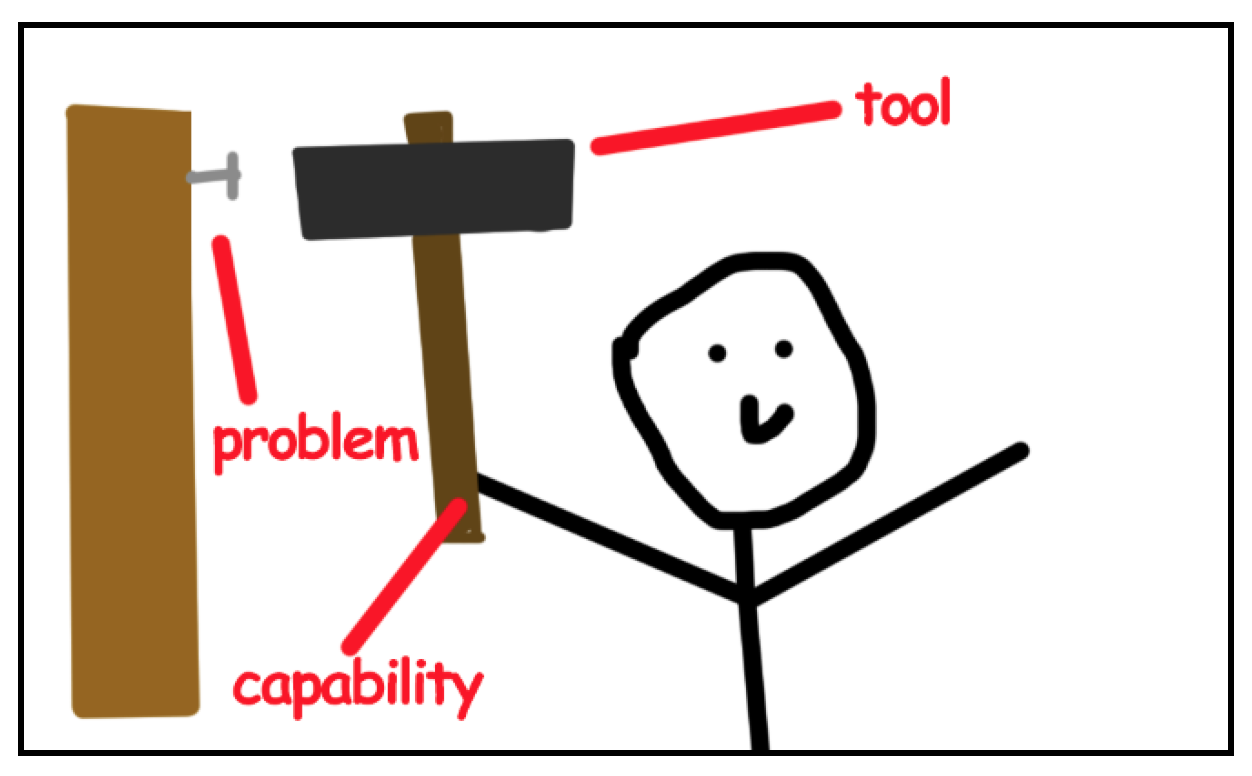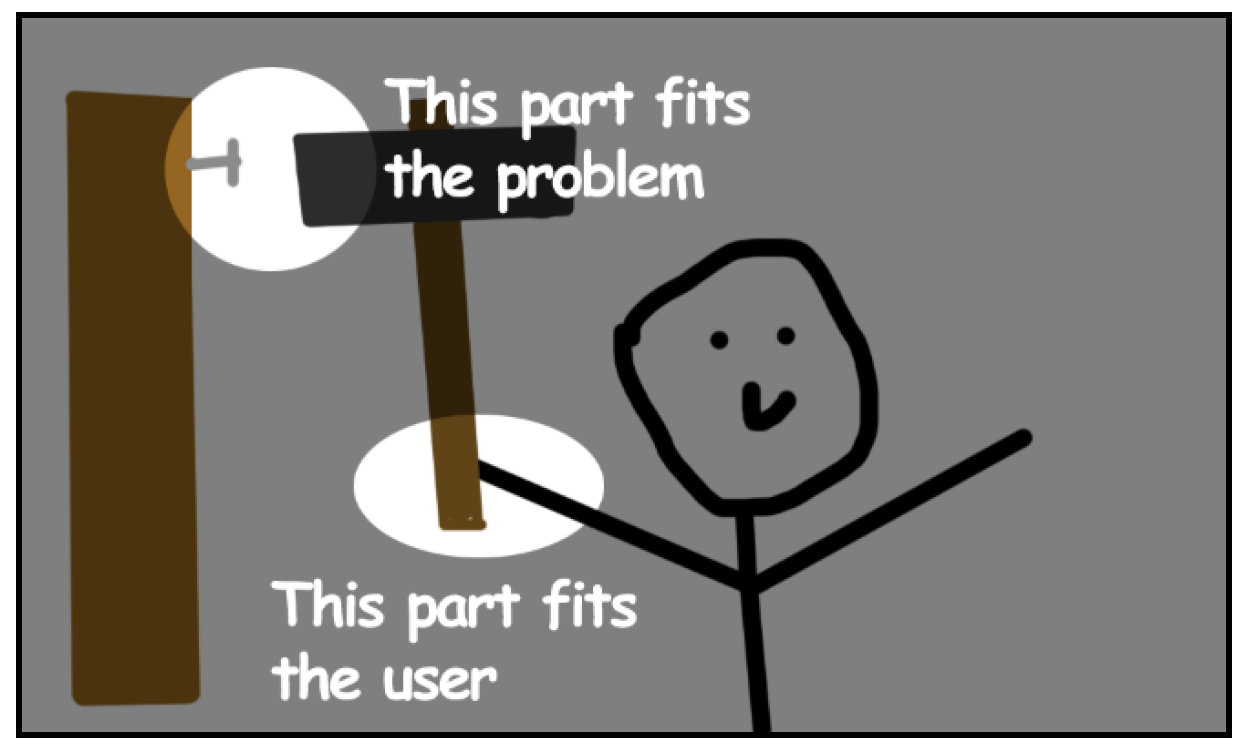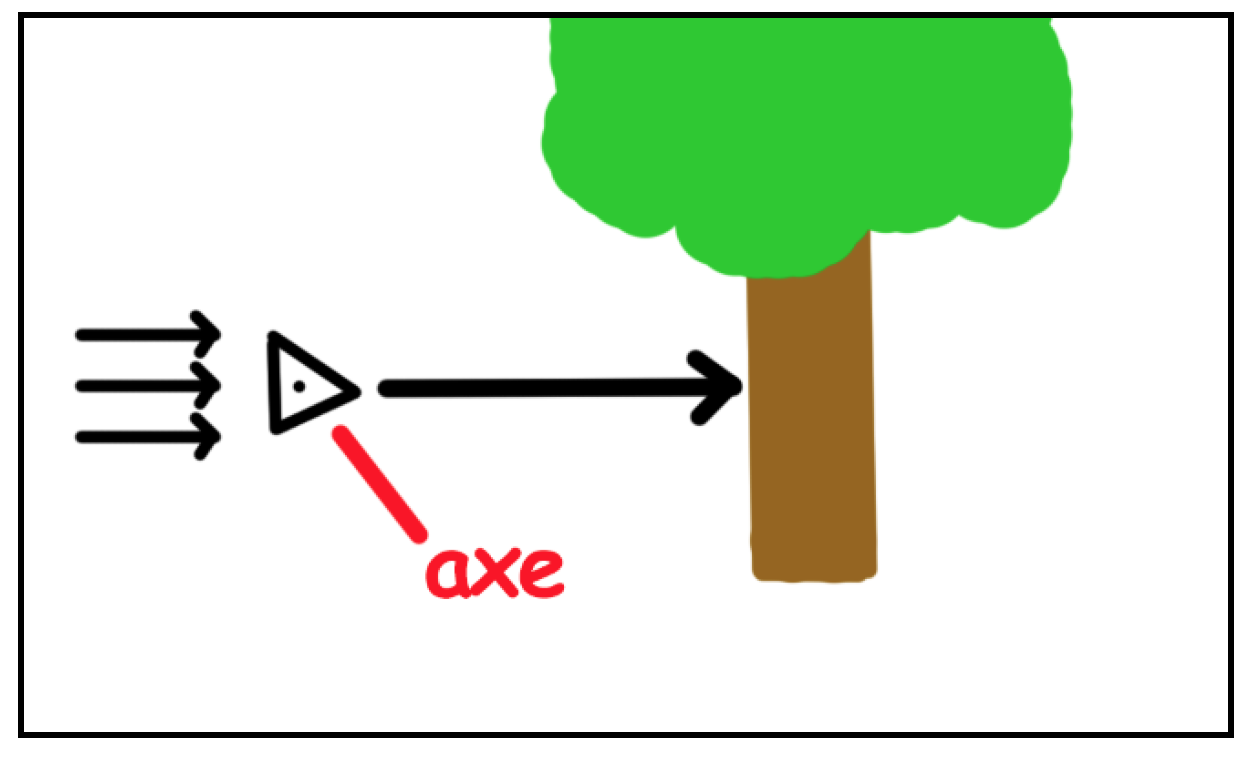A tool addresses human problems by amplifying human capabilities
Tools are everywhere around us. Thanks to our smart (and lethal) tools (i.e. bow and arrow) we have managed to box our way up to the top of the food chain. I would even dare to argue that our tools are exactly what shape us as a human species, but that’s a story for another day. We use tools, we invent new ones, and they become extensions of our very being.
This blog post dedicated to the definition of a tool. What is a tool? What makes a good tool? And what does the second law of thermodynamics have to do with it?
What is a tool?
Let’s start with the definition of a tool. For my definition of a tool I will use Bret Victor’s definition from his essay A brief rant on the future of interaction design.
A tool addresses human problems by amplifying human capabilities.

A great tool fits two sides
A tool is a thing that converts what we can do (our capability) into something we want to do (solve a problem).

A great tool is designed to fit both sides. The hammerhead fits perfectly on the problem (the nail we think needs driving in) and the handle fits perfectly on the person that is going to use the tool.
Redirecting force
I like this definition of a tool because it describes transforming our human capabilities into something that we want to do. This definition is consistent with the second law of thermodynamics which states that energy can not be created nor destroyed. Thus, a tool can never create or destroy energy, it can only redirect it.

Consider the humble axe. We transform rotational energy from our body into the side of the blade. The total energy throughout the whole swing remains the same, what matters is where we redirect the force to!
Conclusion
That’s it! So what does this mean to you? Not much, really. I just urge you to sometimes stop and think of this definition of a tool. Does the tool fit the problem well? Does it fit the user’s hands? Is force being redirected efficiently? Can we improve the tool’s head or handle?
Just to repeat: A tool addresses human problems by amplifying human capabilities. A good tool fits these two parts well. On the one end the tool should fit the problem, and on the other end it should fit the end user.





Comments